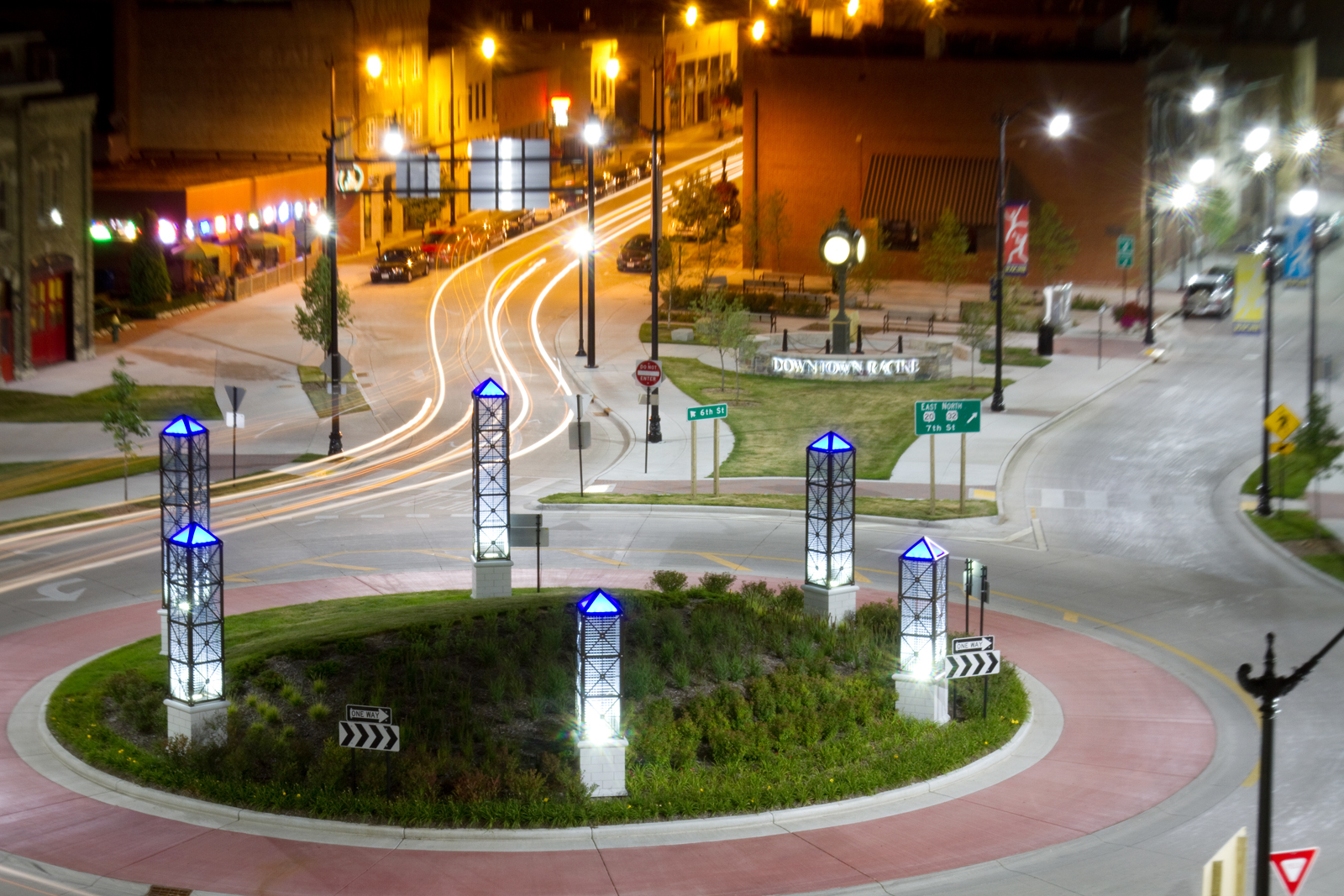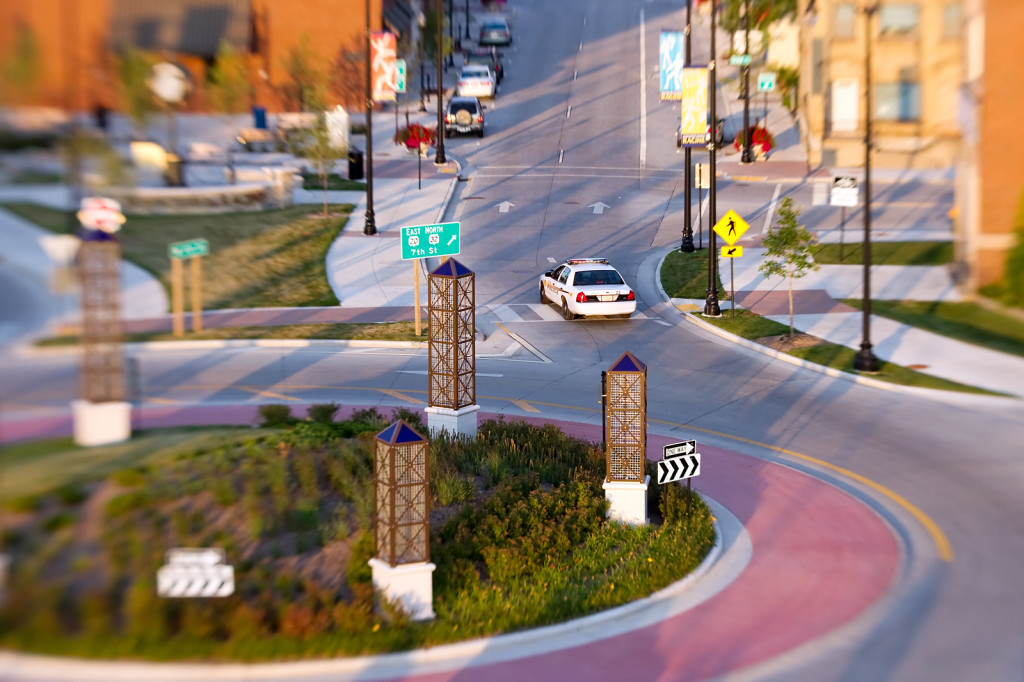Three Do’s (And Two Definite Don’ts!) to Keep a Roundabout Island Alive And Well

How to Design Roundabout Plantings That Are Healthy all Year
- Don’t compact the soil.
- Provide soil that stands up to road salt.
- Pick plants suited to dry conditions.
- Plant thick to fight weeds.
- Water faithfully throughout the first growing season.
The center area of a roundabout can turn into a weedy, underdeveloped island. The combination of maintenance difficulties, soil problems, heat from surrounding pavement, and winter salting is often too much for the plantings inside a roundabout, and within a year’s time, it can seem that all life has been voted off the island. But believe it or not, there are some ways to help plants survive and thrive, transforming your roundabout from the drab into a vibrant, lush focal point, just like the 7th Street Roundabout in Racine, Wisconsin, pictured above.
#1: Don’t compact the soil to the same degree as the roadbed. Ayres Associates landscape architect and ecologist When soils and subgrades are over-compacted (industry standard for road base is 90-95% proctor density), plants are unable to develop the below-ground root systems needed to grow and thrive. And when that happens, plants with minimal root structures take over. Those would be your garden variety weeds.
 Overly compacted soil also prevents water from getting through to the roots, which creates another obstacle to thriving plants. If the subgrade of the roundabout was highly compacted along with the roadbed, it is worth excavating the roundabout island to loosen up the bed material on which the topsoil will be placed. Speaking of topsoil…
Overly compacted soil also prevents water from getting through to the roots, which creates another obstacle to thriving plants. If the subgrade of the roundabout was highly compacted along with the roadbed, it is worth excavating the roundabout island to loosen up the bed material on which the topsoil will be placed. Speaking of topsoil…
#2: Do mitigate the effect of road salt by ensuring topsoil is 70-80% sand, 15-20% silt, and no less than 5-10% organic matter by dry weight, with no more than 3-7% clay.
#3: Do choose your plants carefully; the most suitable plants for the extremely challenging conditions of a roundabout island will be those adapted to dry or semiarid conditions. C4 grasses like little blue stem, side oats gramma, and switchgrass work very well and can handle road salt better than other species. If your roundabout center will take heavy hits from winter plowing, rhizomaceous species – plants that spread underground from their root structures – are a good bet; they’ll be more likely to fill in any scars left by the plow.
#4: Don’t underplant. Your chosen plants won’t expand as fast as weeds can take root, so don’t leave the door wide open for weeds. Most herbaceous species should be planted on 12-inch centers or seeded at rates of 500 to 1,500 seeds per square foot.
#5: Do give them a good head start. Watering the plants for one full growing season will give them the greatest chance to survive. Trees should be watered daily or have watering bags installed to ensure they get sufficient water for root establishment.
Questions on how to keep your roundabout (or other difficult area) in top condition? Contact one of the experts in our landscape architecture group.
Comments
If a tree is planted on top of a roundabout going over a highway what happens to the root systems of the tree?

Post a comment: